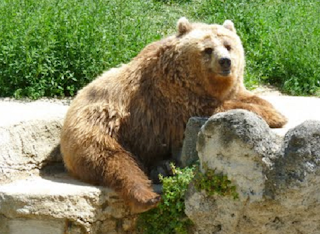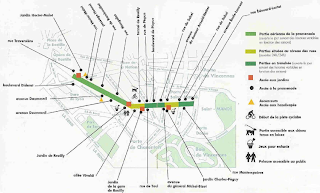History and description
The former name of the Bois de Vincennes was "Vilcena".Since the 11th century, it was used for royal hunts. After it was abandoned for some time, in the 18th century the king Louis XV decided to reforest the deserted park.
The reforestation ended in 1731, the wood became a promenade open to everybody, except for servants and cars.
After 1794, it was a military place and was used like a prison. It suffer from numerous damage at this time.
In 1860, the City of Paris manage the Wood, and Napoleon III decided to transform it into a public park.
The engineer Alphand transformed the wood into a vast landscape park, as he did for the Bois de Boulogne.
Despite all those efforts, during the war of 1870 the wood was damaged. And it's only after the second war world that the City of Paris launched a massive reforestation plan.
Today, the Bois de vincennes is a 995ha area park, wooded for half part, it's also the biggest green space of Paris. It houses several nice places to visit like the zoo de vincennes, the château de vincennes, the parc floral, the Arboretum de l'Ecole Du Breuil...
Also there are 4 lakes to beautify the site:
*the "lac de Gravelle"
* the "lac des Minimes"
* the "lac Daumesnil", the biggest with 2 islands (the island of Reuilly and the island of Bercy)
* the "lac de Saint-Mandé"
There are playgrounds for children, carousel, cycle path, bridleways, theatre guignol, boat trip, guided tours...
La Maison du Parc et du Bois, located at the entrance of the Parc Floral (near Château de Vincennes), provides information on all activities, events, concerts, exhibitions taking place in the Parc floral and the Bois de Vincennes.
Location of the Bois de Vincennes
The Bois de Vincennes is located in the 12th arrondissement of Paris.How to get to the of the Wood
To go to the Wood:* you can use the Paris metro line.
-Paris metro line 1: Château de Vincennes station, Saint-Mandé-Tourelle, Bérault stations
-Paris metro line 8: Charenton-Écoles, Liberté et Porte Dorée stations
* You can use the Paris rer line:
Paris rer A: Vincennes, Fontenay-sous-Bois, Nogent-sur-Marne and Joinville-le-Pont stations
Entrance fee and opening hours
The Wood is a free-admission place and is opened 365 day a year The Bois de Vincennes map







